|
Réponse |
Message 1 de 10 de ce thème |
|
es.wikipedia.org/wiki/Templo_de_Edfu
Es el templo segundo más grande en Egipto después de Karnak y uno de los
mejor conservados. El templo, dedicado al dios halcón Horus, fue construido ...
www.egiptologia.org/arte/templos/edfu/
El templo de Edfú, dedicado al dios halcón Horus, fue comenzado el año 237 a.
C. por Ptolomeo III Evérgetes I. En el año 212 a.C. se habían concluido las ...
|
|
|
|
www.youtube.com/watch?v=ABZBOzF1AFM28 Ago. 2013 - 5 min. - Subido por Kali Group
Templo de Horus en Edfu, Egipto - Es el segundo templo mas grande en Egipto despues de ... |
[PDF]
gnosticos.es/esp/articulos/congreso_egipto/08-Edfu.pdf
A110 km. al sur de Luxor, la ciudad de Edfu alberga un gran templo cuyo ... ¿Lo
habrá protegido el señor del lugar, el halcón Horus, para que supere así la ...
www.minube.com.ar/rincon/templo-de-horus-edfu-a1917
El Templo de Horus, Edfú es sin duda uno de los templos más sorprendentes de
Asuán, tanto por su valor histórico como por su singular arquitectura.
www.elmundoatuspies.es/2014/.../el-templo-de-horus-en-edfu.html
3 Feb 2014 ... El Templo de Edfu dedicado a Horus, hijo de Isis y Osiris, representado en la
mitología egipcia en forma de halcón o en forma humana con ...
www.artehistoria.jcyl.es/v2/contextos/2282.htm
El templo de Edfú es el mejor conservado de todos los de Egipto. Sus 137
metros de largo, con un pílono de entrada de 79 metros de ancho y 36 de altura
...
www.ecured.cu/index.php/Templo_de_Edfú
19 Jul 2014 ... Templo de Edfú. Dedicado al dios halcón Horus, es el templo mejor conservado
de Egipto y el más importante después del de Karnak.
xombit.com/.../leyenda-isis-osiris-horus-templo-horus-edfu
14 Mar 2013 ... El Templo de Horus en Edfú, es el mejor conservado del mundo antiguo. Es uno
de los cuatro templos o lugares donde se desarrolla la ...
html.rincondelvago.com/templo-de-horus.html
PATIO DEL TEMPLO DE HORUS EN EDFÚ. Es un templo de grandiosa
dimensión, realizado en piedra (posiblemente arenisca), labrada en bloques de
...
Búsquedas relacionadas con TEMPLO DE HORUS
|
|
|
 Premier
Premier
 Précédent
2 à 10 de 10
Suivant
Précédent
2 à 10 de 10
Suivant
 Dernier
Dernier

|
|
Réponse |
Message 2 de 10 de ce thème |
|
ASI SON LOS CIELOS DE ENERO
Cuando miramos hacia arriba por las noches y nos encontramos con las familiares constelaciones de verano, es que ha llegado Enero. Al caer la oscuridad comienzan a distinguirse primero las estrellas de el Can Mayor con la brillante Sirio, luego de Tauro y Orión, con las 3 Marías y las 3 Chepas; y hacia el sur: la Cruz del Sur y sus eternas compañeras, Alfa y Rigel del Centauro.
Este conjunto de estrellas brillantes están en la dirección del plano del disco de nuestra Vía Láctea. En esta época del año, durante las noches le damos la espalda al núcleo de la Vía Láctea y si miramos hacia el norte del cielo vemos el Brazo de Perseo, que nos rodea y termina en esa constelación, que se ubica al norte de Tauro. Si miramos hacia el sur del cielo y arriba, observamos un sector más brillante de la Vía Láctea, con nebulosas brillantes, es el lomo del Brazo de Carina-Sagitario, del que alcanzamos a ver sólo una parte.
En medio de la Constelación de Orión, tenemos la fabulosa Nébula de Orión (el objeto central de las 3 Chepas, que parece una estrella débil pero en realidad es una gigantesca nebulosa donde están naciendo cientos de estrellas en este momento). La Nébula de Orión está a 1.500 años luz de nosotros y sus estrellas más brillantes se formaron hace 300.000 años.
En Tauro, que hunde sus cuernos en la franja de la Vía Láctea, tenemos dos cúmulos abiertos de estrellas, las Híades y la Pleyades. Las Híades es un grupo de estrellas muy débiles que parecen rodear a la rojiza Aldebarán, formando un triángulo donde Aldebarán es su vértice más brillante. Este cúmulo, formado hace unos 300 millones de años, está en la etapa de dispersión, y se ubica a unos 150 años luz de nosotros. Aldebarán no forma parte del grupo y está a sólo 68 años luz de la Tierra.
Cerca de allí, encontramos otro hermoso cumulo estelar, las Pléyades, las 7 Hermanas o las 7 Que Brillan, como las conocen en los campos chilenos, es un pequeño asterismo (miniconstelación). Están al norte de Aldebarán y es un cúmulo de unas 250 estrellas recién formadas, hace sólo "50 millones de años", estrellas niñas para los parámetros astronómicos, y aun permanecen juntas, pensemos que el Sol tiene unos 4.800 millones de años de existencia. Están a 415 años luz de distancia. Los japoneses las conocen como las Subaru.
Es así como en un mismo sector del cielo, entre Tauro y Orión, tenemos toda la secuencia de cómo se forman las estrellas: Nacen en nébulas de gas y polvo como podemos ver en la Nébula de Orión, luego de formadas comienzan a dispersarse por las vecindades y con sus potentes vientos estelares despejan los gases de la nube donde nacieron, como lo hacen las Pléyades y finalmente se dispersan alejándose unas de otras como las estrellas de las Híades.
Tauro es cruzado por la Eclíptica, la franja del cielo donde se mueven los planetas, la Luna y (aparentemente) el Sol y está flanqueado por al Oeste por Aries y al Este por Géminis, todas son constelaciones zodiacales.
Si nos quedamos despiertos hasta más tarde, en estas noches veraniegas alcanzaremos a disfrutar además del sector del cielos que veremos al comienzo de las noches de Febrero, donde el cielo es dominado por la gigantesca constelación de Leo.
SIRIO Y CANOPUS: LAS MÁ BRILLANTE
Las estrellas más brillantes del cielo son Sirio y Canopus, que forman una línea que conduce cerca del Polo Sur Celeste. A la medianoche están separadas por 36 grados y 20 minutos.
 Sirio es la estrella más brillante del Can Mayor y Canopus la más brillante de la constelación de la Popa, que formaba parte de la antigua constelación del Argonavis, la nave mitológica usada por los héroes griegos para buscar el Vellocino de Oro. Sirio es la estrella más brillante del Can Mayor y Canopus la más brillante de la constelación de la Popa, que formaba parte de la antigua constelación del Argonavis, la nave mitológica usada por los héroes griegos para buscar el Vellocino de Oro.
Imagen: Sirio A, la estrella perro, y su pequeña compañera Sirio B, una estrella enana blanca, vistas por el Telescopio Espacial Hubble de la NASA. Las líneas cruzadas son efectos causados por el sistela de soporte del espejo secundario del telescopio espacial.
Sirio lleva el nombre del perro de Orión, el mitológico cazador.
|
|
|
|
Réponse |
Message 3 de 10 de ce thème |
|
-
www.philipcoppens.com/canopus_art1.html
We know that Sirius is linked with Isis, but what is Canopus? ... Orion and the Dog
star; the former of these the Egyptians hold sacred to Horus, the latter to Isis.
-
www.philipcoppens.com/canopus_art6.html
The book argued that Canopus was the forgotten “star” of the Egyptian ... in “The
Canopus Revelation” is shown to be erroneous: Orion was linked with Horus, ...
-
es.wikipedia.org/wiki/Vaso_canopo
Para otros usos de este término, véase Canopus. Los cuatro ... a unas
divinidades llamadas Hijos de Horus, quienes protegían su contenido de la
destrucción.
-
en.wikipedia.org/wiki/Canopic_jar
... the mistaken association by early Egyptologists with the Greek legend of
Canopus. ... Hieroglyphs for the four sons of Horus used on an Egyptian canopic
jar.
-
books.google.com.ar/books?isbn=1602060843
Horus was said to duplicate or rise again as the White God. ... Another name of
this dual divinity is Sut-Nub, the original of Sothis-Canopus in the stellar phase ...
-
www.shmoop.com/sons-horus/bottle-brigade.html
The Four Sons of Horus aren't the only gods who live in jars or bottles. Their
containers, called canopic jars, are actually named for the Greek demigod
Canopus.
-
books.google.com.ar/books?isbn=1317654854
Ё} www Herz: tatu, Horus lands, i.e., temple estates, кип: R. 9, 21, 23, 46. ä i р ä)
ä E 113.911, singers, С. 34. à ì ii ä) Ё Iles-tu» praised, О. 34. [l l] Q2 in мы, ...
-
books.google.com.ar/books?isbn=1317654919
... was made “ready for war with weapons of every kind by 23 “the rebels who
were in it—now they had corn- emitted great acts of sacrilege in the land of “
Horus, ...
-
books.google.com.ar/books?isbn=1616405570
Horus was said to duplicate or rise again as the White God. ... Another name of
this dual divinity is Sut-Nub, the original of Sothis-Canopus in the stellar phase; ...
-
books.google.com.ar/books?id=HDVbAAAAcAAJ
CANOPUS. 409] NICOLO. In France. Canopus in front ; the hend of Isis
decorated' with the lotus and two serpents on the forehead. NVater seems to run
from the ...
-
Anunciowww.urbix.com.ar/
Sepa como el movimiento peatonal Impacta sobre su Negocio
|
|
|
|
Réponse |
Message 4 de 10 de ce thème |
|
EL NEXO HORUS, EN EL CONTEXTO A LA RESURRECCION DEL SEÑOR, ES OBVIO UNA REFERENCIA A LA KAABA ISLAMICA Y A LA ESTRELLA CANOPUS. EL TEMPLO DE HORUS EN EDFU, ESTABA ORIENTADO HACIA DICHA ESTRELLA, QUE APARENTEMENTE TIENE UN NEXO CON EL ARCA DE NOE. HORUS, TIENE UN FUERTE NEXO EN ESE CONTEXTO CON REFERENCIA AL ORIGEN DE LA HORA, EN EL MARCO A DICHA RESURRECCION.
|
|
|
|
Réponse |
Message 5 de 10 de ce thème |
|

Diluvio de Noé
La leyenda del Diluvio de Noé comienza en Acuario durante la era astrológica de Tauro, y sigue la trayectoria del sol a través de la eclíptica de Acuario a Piscis a Aries a Tauro a Géminis. Para mayor referencia, véase el Edén para Babel y un mapa de la Zodiac .
Primera Imagen
Noé personifica Acuario del Waterman.
9 Estas son las generaciones de Noé. Noé era un hombre justo y honrado en su generación; Noé caminó con Dios. (Génesis 6: 9)
Los animales entraron en el arca de dos en dos.
9 de dos en dos, macho y hembra, entró en el arca con Noé, como mandó Dios a Noé. (Génesis 7: 9)
Cuando el sol pasa a Aries, la tierra estaba seca. El cordero simboliza la tierra.
14 En el mes segundo, a los veintisiete días del mes, se secó la tierra. (Génesis 8: 13-14)

Segunda imagen
El Argo Navis es una gran constelación de tal manera que se dividió en tres constelaciones: Carina, Puppis y Vela, en representación de la quilla, popa y vela respectivamente. Se encuentra mucho más al sur en el Trópico de Capricornio celestial. Los tres sectores de Capricornio, Acuario y Piscis contienen una gran cantidad de constelaciones acuosas y eran conocidos por antiguos como el mar.
Noé envió un cuervo a buscar tierra firme. El cuervo se fue de aquí para allá hasta que las aguas se secaron.
7 y envió un cuervo; y se fue de aquí para allá hasta que las aguas se secaron sobre la tierra. (Génesis 8: 7)
Después envió una paloma.
8 Y envió á la paloma, para ver si las aguas se habían retirado de sobre la faz de la tierra; (Génesis 8: 8)
Hay un mito griego clásico construido alrededor del Argo Navis, llamado Jason y la búsqueda del vellocino de oro . La historia sigue el sol en todo el zodíaco.

Tercera imagen
Noé se emborrachó y se quedó desnudo en su tienda de campaña. Cam vio su desnudez y le dijo a sus dos hermanos.
20 Noé fue el primer labrador de la tierra. Él plantó una viña;
21 y bebió del vino, y se embriagó, y yacía descubierto en su tienda.
21 Y Cam, padre de Canaán, vio la desnudez de su padre, y dijo a sus dos hermanos que estaban afuera. (Gen. 9: 20-22)
En Tauro, vemos Orion como Noé, Auriga como jamón y los gemelos Géminis como Sem y Jepheth. Los tres hijos están mirando hacia abajo a su padre.
Sem y Jafet cubrieron su padre, pero no vieron su desnudez.
23 Entonces Sem y Jafet tomaron la ropa, la pusieron sobre sus propios hombros, y andando hacia atrás, cubrieron la desnudez de su padre; sus rostros fueron rechazados, y no vieron la desnudez de su padre. (Gen. 9:23)
|
|
|
|
Réponse |
Message 6 de 10 de ce thème |
|
JESUCRISTO SE EXPRESA EN CLAVE CON CODIGOS EGIPTOLOGICOS Y MASONICOS
Juan 7
1. Después de estas cosas, andaba Jesús en Galilea; pues no quería andar en Judea, porque los judíos procuraban matarle.
2. Estaba cerca la fiesta de los judíos, la de los tabernáculos;
3. y le dijeron sus hermanos: Sal de aquí, y vete a Judea, para que también tus discípulos vean las obras que haces.
4. Porque ninguno que procura darse a conocer hace algo en secreto. Si estas cosas haces, manifiéstate al mundo.
5. Porque ni aun sus hermanos creían en él.
6. Entonces Jesús les dijo: Mi tiempo aún no ha llegado, mas vuestro tiempo siempre está presto.
7. No puede el mundo aborreceros a vosotros; mas a mí me aborrece, porque yo testifico de él, que sus obras son malas.
8. Subid vosotros a la fiesta; yo no subo todavía a esa fiesta, porque mi tiempo aún no se ha cumplido.
9. Y habiéndoles dicho esto, se quedó en Galilea.
10. Pero después que sus hermanos habían subido, entonces él también subió a la fiesta, no abiertamente, sino como en secreto.
11. Y le buscaban los judíos en la fiesta, y decían: ¿Dónde está aquél?
12. Y había gran murmullo acerca de él entre la multitud, pues unos decían: Es bueno; pero otros decían: No, sino que engaña al pueblo.
13. Pero ninguno hablaba abiertamente de él, por miedo a los judíos.
14. Mas a la mitad de la fiesta subió Jesús al templo, y enseñaba.
15. Y se maravillaban los judíos, diciendo: ¿Cómo sabe éste letras, sin haber estudiado?
16. Jesús les respondió y dijo: Mi doctrina no es mía, sino de aquel que me envió.
17. El que quiera hacer la voluntad de Dios, conocerá si la doctrina es de Dios, o si yo hablo por mi propia cuenta.
18. El que habla por su propia cuenta, su propia gloria busca; pero el que busca la gloria del que le envió, éste es verdadero, y no hay en él injusticia.
19. ¿No os dio Moisés la ley, y ninguno de vosotros cumple la ley? ¿Por qué procuráis matarme?
20. Respondió la multitud y dijo: Demonio tienes; ¿quién procura matarte?
21. Jesús respondió y les dijo: Una obra hice, y todos os maravilláis.
22. Por cierto, Moisés os dio la circuncisión (no porque sea de Moisés, sino de los padres); y en el día de reposo circuncidáis al hombre.
23. Si recibe el hombre la circuncisión en el día de reposo, para que la ley de Moisés no sea quebrantada, ¿os enojáis conmigo porque en el día de reposo sané completamente a un hombre?
24. No juzguéis según las apariencias, sino juzgad con justo juicio.
25. Decían entonces unos de Jerusalén: ¿No es éste a quien buscan para matarle?
26. Pues mirad, habla públicamente, y no le dicen nada. ¿Habrán reconocido en verdad los gobernantes que éste es el Cristo?
27. Pero éste, sabemos de dónde es; mas cuando venga el Cristo, nadie sabrá de dónde sea.
28. Jesús entonces, enseñando en el templo, alzó la voz y dijo: A mí me conocéis, y sabéis de dónde soy; y no he venido de mí mismo, pero el que me envió es verdadero, a quien vosotros no conocéis.
29. Pero yo le conozco, porque de él procedo, y él me envió.
30. Entonces procuraban prenderle; pero ninguno le echó mano, porque aún no había llegado su hora.
31. Y muchos de la multitud creyeron en él, y decían: El Cristo, cuando venga, ¿hará más señales que las que éste hace?
32. Los fariseos oyeron a la gente que murmuraba de él estas cosas; y los principales sacerdotes y los fariseos enviaron alguaciles para que le prendiesen.
33. Entonces Jesús dijo: Todavía un poco de tiempo estaré con vosotros, e iré al que me envió.
34. Me buscaréis, y no me hallaréis; y a donde yo estaré, vosotros no podréis venir.
35. Entonces los judíos dijeron entre sí: ¿Adónde se irá éste, que no le hallemos? ¿Se irá a los dispersos entre los griegos, y enseñará a los griegos?
36. ¿Qué significa esto que dijo: Me buscaréis, y no me hallaréis; y a donde yo estaré, vosotros no podréis venir?
37. En el último y gran día de la fiesta, Jesús se puso en pie y alzó la voz, diciendo: Si alguno tiene sed, venga a mí y beba.
38. El que cree en mí, como dice la Escritura, de su interior correrán ríos de agua viva. (EL ultimo dia, es una referencia a OSHANAH RABBAH, el septimo dia de la FIESTA DE LOS TABERNACULOS, OSEA EL 21 DE TISHRI)
39. Esto dijo del Espíritu que habían de recibir los que creyesen en él; pues aún no había venido el Espíritu Santo, porque Jesús no había sido aún glorificado.
40. Entonces algunos de la multitud, oyendo estas palabras, decían: Verdaderamente éste es el profeta.
41. Otros decían: Este es el Cristo. Pero algunos decían: ¿De Galilea ha de venir el Cristo?
42. ¿No dice la Escritura que del linaje de David, y de la aldea de Belén, de donde era David, ha de venir el Cristo?
43. Hubo entonces disensión entre la gente a causa de él.
44. Y algunos de ellos querían prenderle; pero ninguno le echó mano.
45. Los alguaciles vinieron a los principales sacerdotes y a los fariseos; y éstos les dijeron: ¿Por qué no le habéis traído?
46. Los alguaciles respondieron: ¡Jamás hombre alguno ha hablado como este hombre!
47. Entonces los fariseos les respondieron: ¿También vosotros habéis sido engañados?
48. ¿Acaso ha creído en él alguno de los gobernantes, o de los fariseos?
49. Mas esta gente que no sabe la ley, maldita es.
50. Les dijo Nicodemo, el que vino a él de noche, el cual era uno de ellos:
51. ¿Juzga acaso nuestra ley a un hombre si primero no le oye, y sabe lo que ha hecho?
52. Respondieron y le dijeron: ¿Eres tú también galileo? Escudriña y ve que de Galilea nunca se ha levantado profeta.
53. Cada uno se fue a su casa;
Juan 8
1. y Jesús se fue al monte de los Olivos.
2. Y por la mañana volvió al templo, y todo el pueblo vino a él; y sentado él, les enseñaba. (AL DIA SIGUIENTE DEL SEPTIMO DIA DE TABERNACULOS, ES EL OCTAVO, OSEA EL 22/7 O 22 DE TISHRI O SEPTIMO MES HEBREO, EN EL DIA QUE LOS JUDIOS LEEN EL SALMO 119, OSEA LA FESTIVIDAD DE SIMCHAT TORAH O RECOCIJO EN LA TORAH. ES EN ESTE MARCO ADONDE LOS FARISEOS LE TIRAN PIEDRAS A LA RAMERA)
3. Entonces los escribas y los fariseos le trajeron una mujer sorprendida en adulterio; y poniéndola en medio,
4. le dijeron: Maestro, esta mujer ha sido sorprendida en el acto mismo de adulterio.
5. Y en la ley nos mandó Moisés apedrear a tales mujeres. Tú, pues, ¿qué dices?
6. Mas esto decían tentándole, para poder acusarle. Pero Jesús, inclinado hacia el suelo, escribía en tierra con el dedo.
Juan 9
1. Al pasar Jesús, vio a un hombre ciego de nacimiento.
2. Y le preguntaron sus discípulos, diciendo: Rabí, ¿quién pecó, éste o sus padres, para que haya nacido ciego?
3. Respondió Jesús: No es que pecó éste, ni sus padres, sino para que las obras de Dios se manifiesten en él.
4. Me es necesario hacer las obras del que me envió, entre tanto que el día dura; la noche viene, cuando nadie puede trabajar.
5. Entre tanto que estoy en el mundo, luz soy del mundo.
6. Dicho esto, escupió en tierra, e hizo lodo con la saliva, y untó con el lodo los ojos del ciego,
7. y le dijo: Ve a lavarte en el estanque de Siloé (que traducido es, Enviado). Fue entonces, y se lavó, y regresó viendo.
8. Entonces los vecinos, y los que antes le habían visto que era ciego, decían: ¿No es éste el que se sentaba y mendigaba?
9. Unos decían: El es; y otros: A él se parece. El decía: Yo soy.
10. Y le dijeron: ¿Cómo te fueron abiertos los ojos?
11. Respondió él y dijo: Aquel hombre que se llama Jesús hizo lodo, me untó los ojos, y me dijo: Ve al Siloé, y lávate; y fui, y me lavé, y recibí la vista. (NOTEN EL NEXO 9:11, CON LA RAMERA DE JUAN 8, EN EL CONTEXTO A LA TIERRA. ESTE SIGUE SIENDO EL 22/7 O 22 DEL SEPTIMO MES HEBREO)
12. Entonces le dijeron: ¿Dónde está él? El dijo: No sé.
13. Llevaron ante los fariseos al que había sido ciego.
14. Y era día de reposo cuando Jesús había hecho el lodo, y le había abierto los ojos. (ESTO CONFIRMA QUE ERA 22/7, PORQUE ERA DIA DE REPOSO LUNAR QUE SON LOS 8, 15, 22 Y 29)
15. Volvieron, pues, a preguntarle también los fariseos cómo había recibido la vista. El les dijo: Me puso lodo sobre los ojos, y me lavé, y veo.
16. Entonces algunos de los fariseos decían: Ese hombre no procede de Dios, porque no guarda el día de reposo. Otros decían: ¿Cómo puede un hombre pecador hacer estas señales? Y había disensión entre ellos.
17. Entonces volvieron a decirle al ciego: ¿Qué dices tú del que te abrió los ojos? Y él dijo: Que es profeta.
18. Pero los judíos no creían que él había sido ciego, y que había recibido la vista, hasta que llamaron a los padres del que había recibido la vista,
19. y les preguntaron, diciendo: ¿Es éste vuestro hijo, el que vosotros decís que nació ciego? ¿Cómo, pues, ve ahora?
20. Sus padres respondieron y les dijeron: Sabemos que éste es nuestro hijo, y que nació ciego;
21. pero cómo vea ahora, no lo sabemos; o quién le haya abierto los ojos, nosotros tampoco lo sabemos; edad tiene, preguntadle a él; él hablará por sí mismo.
22. Esto dijeron sus padres, porque tenían miedo de los judíos, por cuanto los judíos ya habían acordado que si alguno confesase que Jesús era el Mesías, fuera expulsado de la sinagoga.
23. Por eso dijeron sus padres: Edad tiene, preguntadle a él.
24. Entonces volvieron a llamar al hombre que había sido ciego, y le dijeron: Da gloria a Dios; nosotros sabemos que ese hombre es pecador.
25. Entonces él respondió y dijo: Si es pecador, no lo sé; una cosa sé, que habiendo yo sido ciego, ahora veo.
26. Le volvieron a decir: ¿Qué te hizo? ¿Cómo te abrió los ojos?
27. El les respondió: Ya os lo he dicho, y no habéis querido oir; ¿por qué lo queréis oír otra vez? ¿Queréis también vosotros haceros sus discípulos?
28. Y le injuriaron, y dijeron: Tú eres su discípulo; pero nosotros, discípulos de Moisés somos.
29. Nosotros sabemos que Dios ha hablado a Moisés; pero respecto a ése, no sabemos de dónde sea.
30. Respondió el hombre, y les dijo: Pues esto es lo maravilloso, que vosotros no sepáis de dónde sea, y a mí me abrió los ojos.
31. Y sabemos que Dios no oye a los pecadores; pero si alguno es temeroso de Dios, y hace su voluntad, a ése oye.
32. Desde el principio no se ha oído decir que alguno abriese los ojos a uno que nació ciego.
33. Si éste no viniera de Dios, nada podría hacer.
34. Respondieron y le dijeron: Tú naciste del todo en pecado, ¿y nos enseñas a nosotros? Y le expulsaron.
35. Oyó Jesús que le habían expulsado; y hallándole, le dijo: ¿Crees tú en el Hijo de Dios?
36. Respondió él y dijo: ¿Quién es, Señor, para que crea en él?
Juan 10
1. De cierto, de cierto os digo: El que no entra por la puerta en el redil de las ovejas, sino que sube por otra parte, ése es ladrón y salteador. (CRISTO SE EXPRESA FUERTE MENTE EN CLAVE. LA OVEJA ES RAQUEL, LA MADRE DE BENJAMIN SEGUN GENESIS 35. RAQUEL SIGNIFICA OVEJA)
2. Mas el que entra por la puerta, el pastor de las ovejas es. (PASTOR / ISHTAR / HATHOR EN UN MARCO EGIPTOLOGICO. HATHOR ERA LA DIVINIDAD EN UN CONTEXTO FEMENINO Y TENIA FUERTE RELACION CON LA PRECESION DE LOS EQUINOCCIOS, EN EL CONTEXTO AL NACIMIENTO DE UN BEBE. EL TEMPLO DE DENDERA ESTABA ORIENTADO HACIA EL NORTE CON REFERENCIA A LA CONSTELACION DEL DRAGON, OSEA APOCALIPSIS 12)
3. A éste abre el portero, y las ovejas oyen su voz; y a sus ovejas llama por nombre, y las saca.
4. Y cuando ha sacado fuera todas las propias, va delante de ellas; y las ovejas le siguen, porque conocen su voz.
5. Mas al extraño no seguirán, sino huirán de él, porque no conocen la voz de los extraños.
6. Esta alegoría les dijo Jesús; pero ellos no entendieron qué era lo que les decía.
7. Volvió, pues, Jesús a decirles: De cierto, de cierto os digo: Yo soy la puerta de las ovejas.
8. Todos los que antes de mí vinieron, ladrones son y salteadores; pero no los oyeron las ovejas.
9. Yo soy la puerta; el que por mí entrare, será salvo; y entrará, y saldrá, y hallará pastos.
10. El ladrón no viene sino para hurtar y matar y destruir; yo he venido para que tengan vida, y para que la tengan en abundancia.
11. Yo soy el buen pastor; el buen pastor su vida da por las ovejas.
12. Mas el asalariado, y que no es el pastor, de quien no son propias las ovejas, ve venir al lobo y deja las ovejas y huye, y el lobo arrebata las ovejas y las dispersa. (Aqui CRISTO esta haciendo una analogia al NACIMIENTO DE BENJAMIN, EL LOBO, CUANDO MUERE RAQUEL SEGUN GENESIS 35. LA REFERENCIA AL ASALARIADO ES UN NEXO CON LA SAL, OSEA LA ALQUIMIA, EL GRIAL. EN EL TEMPLO DE DENDERA, ESTABA DISEÑADO CON LA PUERTA HACIA EL ESTE CON REFERENCIA A LA CONSTELACION DE SIRIO / PERRO/ LOBO / CHACAL / ISIS.)
13. Así que el asalariado huye, porque es asalariado, y no le importan las ovejas. (ES OBVIA LA REFERENCIA AL NACIMIENTO DE BENJAMIN CUANDO MUERE RAQUEL. CRISTO SE EXPRESA MUY EN FORMA ESOTERICA. LA EUCARISTIA CATOLICA ESTA DISEÑADA BAJO ESTE PATRON ALQUIMICO. ¿SABEN LOS TEOLOGOS CATOLICOS QUE LA VIRGEN ES MARIA LA MAGDALENA?)
14. Yo soy el buen pastor; y conozco mis ovejas, y las mías me conocen,
15. así como el Padre me conoce, y yo conozco al Padre; y pongo mi vida por las ovejas.
16. También tengo otras ovejas que no son de este redil; aquéllas también debo traer, y oirán mi voz; y habrá un rebaño, y un pastor.
17. Por eso me ama el Padre, porque yo pongo mi vida, para volverla a tomar.
18. Nadie me la quita, sino que yo de mí mismo la pongo. Tengo poder para ponerla, y tengo poder para volverla a tomar. Este mandamiento recibí de mi Padre.
19. Volvió a haber disensión entre los judíos por estas palabras.
20. Muchos de ellos decían: Demonio tiene, y está fuera de sí; ¿por qué le oís? (SAL-O-MON / MON / MONKEY / MONEY / MONDAY / GRAN PIRAMIDE DE GIZE DISEÑADA EN FUNCION A LA ALQUIMIA EN EL CONTEXTO AL PLANETA TIERRA Y LA LUNA)
21. Decían otros: Estas palabras no son de endemoniado. ¿Puede acaso el demonio abrir los ojos de los ciegos?
22. Celebrábase en Jerusalén la fiesta de la dedicación. Era invierno, (LA FIESTA DE JANUKAH, OSEA EL 24 DEL NOVENO MES HEBREO, QUE DURA 7 DIAS, EN FUNCION A 9 MESES LUNARES EXACTOS. ¿DE QUE CREE USTED QUE ESTA HABLANDO EL SEÑOR? ES OBVIO QUE DEL SANTO GRIAL)
23. y Jesús andaba en el templo por el pórtico de Salomón.
24. Y le rodearon los judíos y le dijeron: ¿Hasta cuándo nos turbarás el alma? Si tú eres el Cristo, dínoslo abiertamente.
|
|
|
|
Réponse |
Message 7 de 10 de ce thème |
|
Dividing Egypt
Philip Coppens
 Most ancient civilisations created a centre for each city, but equally had a “national centre”, which acted as a “central centre”. Authors such as Jean Richer have argued that Greek city planning, i.e. the location where certain towns would be built, is partially linked with trying to maintain a “master plan”, incorporating this “central centre” from which other centres radiate. He believes that the Greeks were aware of a meridian, and that this was “centred” on Mount Olympos, the place where the gods were said to reside. Most ancient civilisations created a centre for each city, but equally had a “national centre”, which acted as a “central centre”. Authors such as Jean Richer have argued that Greek city planning, i.e. the location where certain towns would be built, is partially linked with trying to maintain a “master plan”, incorporating this “central centre” from which other centres radiate. He believes that the Greeks were aware of a meridian, and that this was “centred” on Mount Olympos, the place where the gods were said to reside.
These concepts seem to go back to the origins of man and hence it should come as no surprise that they are present in Southern America, where the town of Cuczo was also identified as the “navel” of the entire Inca culture. The Jesuit Father Bernabe Cobo, in his book The History of the New World (1653), wrote about the ceques in Cuczo. These were lines on which wak’as – shrines – were placed and which were venerated by local people. Ceques have been described as sacred pathways. Cobo described how ceques radiated outwards from the Temple of the Sun at the centre of the old Inca capital. These were invisible lines, being only apparent in the alignments of the wak’as. The ceques radiated out between two lines at right angles, which divided the city into four and extended out into the Inca Empire. Each ceque was in the care of a family. Wak’as mostly took the form of stones, springs, hills, or stones on hills. Offerings were made, often in the form of human sacrifice, usually of small children. These ceremonies began in Cuczo and culminated in a sacrifice at specially designated sites often located near the summits of holy mountains.
Such division in space is made by a meridian – an imaginary line running north-south, connecting the northern with the southern polar stars. Thus, the meridian divided of space in two halves. The creation of the meridian is literally placing a marker in space (Earth Surface) for time. Hence the creation of the meridian is the human intervention in bringing order to space and time… and in many respects, creating time – the basis of the calendar.
The “marker of time”, the meridian, was both the point of creation (place), as well as the New Year (time). The Egyptians added to this a link with the Nile, as the flooding of the Nile was linked with the start of the New Year. In Egypt, the river Nile generally runs from North to South and could therefore be considered to be a depiction of a “meridian” – a natural one.
 The Nile, identified with the god Hapi, who was a characteristic of Osiris, might also have been interpreted with the Djed pillar and the Cosmic Tree. The Nile was literally the “spine” of Egypt: it was the backbone of communication; if the Nile would no longer be the prime method of communication, Egypt would literally become paralysed. The Nile, identified with the god Hapi, who was a characteristic of Osiris, might also have been interpreted with the Djed pillar and the Cosmic Tree. The Nile was literally the “spine” of Egypt: it was the backbone of communication; if the Nile would no longer be the prime method of communication, Egypt would literally become paralysed.
On a map, the Nile could be seen as the spinal cord, with the Delta somewhat resembling the brain – it takes imagination, but that is, after all, what is required for symbolism. The Nile had its mythological root on an island Suhail, which is linked with the star Canopus, which to the ancient Egyptians was the Southern polar star. From this site, it grew and than diversified, like a tree, around the Nile Delta. Again, seeing the Nile as a tree takes some imagination…
Certain researchers, however, believe they have to go beyond this initial analysis and state that the Egyptians usd an artificial meridian in Egypt as well. This would mean that the ancient Egyptians had a methodology to measure their land accurately – and it is clear that Egyptologists have labelled this concept even more imaginary than any image of a tree or a backbone in the course of the river Nile.
The best-known example is the meridian defined by the Great Pyramid, identified by Livio Catullo Stecchini. This meridian bisected the Nile Delta (at 31 degrees 14 minutes East) and allegedly predated the building of the Great Pyramid. Stecchini built upon observations from Napoleon’s savants who observed, when they arrived in Egypt in 1798, that the Great Pyramid is situated at the exact apex of the Nile Delta such that an arc centred on the Great Pyramid defined the extent of the Delta, perfectly enclosing its outer perimeter. The northern promontory of the Delta is due North of the pyramid.
Stecchini pointed out that the original name that was used by the ancient Egyptians for their country was To-Mera, “The Land that was Measured”. The hieroglyph for the mer phonetic used in this name is the picture of the hoe, or tilling instrument, supporting the intended reading of “measured”. Mer, of course, is also the name for a pyramid.
In 1882, Robert T. Ballard pointed out that this placement of the Great Pyramid would have allowed the residents of the Nile Delta to easily resurvey their fields every year after the annual flood using only a plumb-line, by sighting on the apex of the Great Pyramid. He further demonstrated that the combination of the three Gizeh pyramids would have improved this operation and provided more information than a single pyramid by itself could have.
The Egyptians were extremely concerned with determining exact boundaries and areas of land surface. The annual inundation of the Nile erased all boundary lines between fields. Herodotus, Plato, Diodorus, Strabo, Clemens of Alexandria, Iamblichus and others, ascribe the origin of geometry to changes which annually took place from the inundation, and to the consequent necessity of adjusting the claims of each person respecting the limits of the lands.
The imagery of the ancient Egyptians measuring their land after the annual deluge, from the primeval hill of Gizeh, using the plumb-line was a practical necessity that at the same time contained all the required symbolic ingredients, including the “plumb-line” in the sky, which is made by Sirius and Canopus, which in mythology was said to measure the depths of the Abyss – the annual inundation.
We know that the constellation Argo, in which Canopus is the principle star, was the boat, and we know that the Nile was visualised as Eridanus. Is there a possibility that this myth was materialised on the Egyptian landscape? Wim Zitman, in his book Egypt: Image of Heaven (2005), believes that the answer is an affirmative yes. He argued that the “Celestial Boat” that shipped the souls to the Afterlife – also known as the Sokar-boat, as well as the Hnw and Hennu boat – had been outlined by the placements of the pyramids along the bank of the river Nile. In essence, connecting the pyramids from El Lahun to Abu Rawash created the outline of a boat, literally sitting on the river Nile. Coincidence? Zitman has created a substantial body of documentation to argue that it is not and goes into detailed analysis as to why the ancient Egyptians carefully planned the design and the location of the pyramids.
 Space was divided into two halves to create the meridian, but it seems that most cultures then halved space in the other direction. The end result is two lines intersecting at one point: the sign of the cross. The centre was a crossing, a singularity, where in most cultures we find the primeval hill, or the Mound of Creation. This was itself a point from which the gods were said to ascend, or sit – as in the case of Mount Olympos. Space was divided into two halves to create the meridian, but it seems that most cultures then halved space in the other direction. The end result is two lines intersecting at one point: the sign of the cross. The centre was a crossing, a singularity, where in most cultures we find the primeval hill, or the Mound of Creation. This was itself a point from which the gods were said to ascend, or sit – as in the case of Mount Olympos.
In basic town planning, the two intersecting lines would often be two roads, one running (generally) north-south, the other east-west. This can still be seen inside the megalithic monument of Avebury, in England. This is a village, built inside an ancient henge structure, where four roads meet each other at an angle of roughly ninety degrees, forming a crossroads.
In Egypt, the cross was the sign for a city and it is well-known that cities normally came about along crossings of roads. We also know that Egypt was the unification of Upper and Lower Egypt; the division occurred, according to Stecchini, on the Gizeh Plateau. Each was thus divided into four sectors, mimicking the natural division of the land, into the Delta and the Nile, and the East and West bank of the river Nile. It makes the Gizeh plateau into the primeval hill, the hill that belonged to Atum, who made his ascent and descent to and from heaven there, as ancient Egyptian myths tell us.
Is Stecchini right in adding a new dimension to ancient Egypt, claiming that it is likely that some form of geographical planning was practised by this ancient civilisation? In Greece, Pausanias speaks of the cult of Apollo coming from Tempe to Delphi. Zeus released two birds from the ends of the Earth. One bird was released from Tempe, the other from Prasiae and the two birds crossed at Delphi. Hence, Delphi became a “crossing”, where the two lines intersected. Jean Richer adds that the distance from Tempe to Dodona and Tempe to Delphi is equal, which underlines that the insertion of a meridian into the landscape was definitely within the capabilities of our forefathers.
The concept of birds can not merely be found in Delphi, but also at Heliopolis, in Egypt. Egyptologists agree that Heliopolis and the Gizeh plateau were the main centres of the creator god Atum. We need to remember the role of the Phoenix of Heliopolis, resting on the benben stone, the primordial hill. Stecchini stated that “usually on top of Sokar, as on top of any omphalos, there are portrayed two birds facing each other; in ancient iconography these two birds, usually doves, are a standard symbol for the stretching of meridians and parallels.” This was then interpreted to indicate that the Great Pyramid formed the centre of “matrix” of lines, similar to the modern grid created by the lines of longitude and latitude.
 According to Stecchini, the Gizeh plateau may have been the “prime primeval hill” of Egypt. But that is not all. Stecchini further claimed that a number of locations throughout the ancient world were located in exact geodetic relation to the longitude meridian of the Great Pyramid. Among these sites were: Nimrod, Sardi, Susa, Mycenae, Dodona and Delphi, as well as the Ka’aba at Mecca, and Mt. Gerizim, the original Jewish holy centre, before it was moved to Jerusalem in 980 BC. Another centre was the Persian capital Persepolis, which was located at 30º 00’ north latitude, and three units of exactly 7º 12’ east of the meridian of the Great Pyramid. According to Stecchini, the Gizeh plateau may have been the “prime primeval hill” of Egypt. But that is not all. Stecchini further claimed that a number of locations throughout the ancient world were located in exact geodetic relation to the longitude meridian of the Great Pyramid. Among these sites were: Nimrod, Sardi, Susa, Mycenae, Dodona and Delphi, as well as the Ka’aba at Mecca, and Mt. Gerizim, the original Jewish holy centre, before it was moved to Jerusalem in 980 BC. Another centre was the Persian capital Persepolis, which was located at 30º 00’ north latitude, and three units of exactly 7º 12’ east of the meridian of the Great Pyramid.
According to Stecchini, the reason for this 7º 12’ unit was that the Persian Empire of King Darius the Great was idealised as three geodetic squares of six degrees of latitude, stretching from thirty to 36 degrees North. Note that that latitude was the northern limit of the visibility of Canopus, Egypt’s southern polar star, with 30 degrees North not only the latitude of Persepolis, but also the Great Pyramid. At 33º north, the midpoint of this distance, six degrees of latitude is equal to 7º 12’ of longitude, thus making these regions true squares.
If Stecchini had known the importance of Canopus to the ancient Egyptians, he would have been able to argue his case with such fervour that potentially his findings would be taught in schoolbooks. Not only are there six degrees of latitude between Rhodes, the northern limit of Canopus and the Gizeh Plateau, there are a further – precise – six degrees between the Great Pyramid and the Southern boundary of Egypt, Elephantine, the First Cataract – which is where the island of Suhail, Canopus of the South, is located. I would suggest this “coincidence” is no coincidence at all, but reveals the detailed planning, based on the visibility of the star Canopus, of ancient Egypt. It would also address the oddity of why Upper Egypt had six degrees of latitude, and Lower Egypt only one – from Gizeh to the Mediterranean Sea. In Stecchini’s model, the area between 30 and 36 degrees would be seen as “Lower Egypt” – though more symbolically that practically.

map graphic courtesy of Simon Miles
Little is known of the early history of cartography, though clay tablets showing maps that date to ca. 2300 BC have been found in Babylonia. An important clue about prehistoric geography can be read in Apollonius of Rhodes, in The Voyage of Argo, where Argus informs Jason: “Now we are told that from this country [Egypt] a certain king set out… and made his way through the whole of Europe and Asia, founding many cities as he went… to this day Aea stands, with people in it descended from the very men whom that king settled there. Moreover they have preserved tablets of stone which their ancestors engraved with maps giving the outlines of the land and sea and the routes in all directions.”
This is powerful evidence that in ancient times, Egypt was seen as the prehistoric home of geography, that “ordered” Europe and Asia, in line with Stecchini’s finding. We can extend Stecchini’s grid further west, whereby we find that the Paris Meridian – officially an invention of the 17th century – actually turns out to fit perfectly in Stecchini’s “Pyramid Grid System”. Is it a coincidence that sites such as the French Carnac sit within this grid as well?
We are at the beginning of rediscovering a lost science, which other authors, such as Florence and Kenneth Wood in Homer’s Secret Iliad, are also rediscovering step by step. It is powerful evidence that our forefathers were much more knowledgeable than commonly believed and that they were able to accurately map the lands from western Europe to Asia. One important question is how…
Extracted and adapted from The Canopus Revelation: Stargate of the Gods and the Ark of Osiris, with minor additions not found in the book.
|
|
|
|
Réponse |
Message 8 de 10 de ce thème |
|
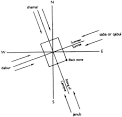
islamic-awareness.org
base of the Kaaba towards
376 × 362 - 28k - jpeg |

forum09.faithfreedom.org
the Kaaba was CLEARLY
568 × 504 - 25k - png |

en.wikipedia.org
A drawing of the Kaaba.
1280 × 853 - 114k - png |
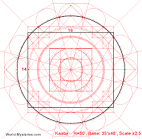
blog.world-mysteries.com
Kaaba 25 REC cube (Height = 43
759 × 743 - 33k - png |

forum09.faithfreedom.org
This image shows the Kaaba
800 × 454 - 1424k - png |

bitacoradegalileo.com
suroriental de la Kaaba,
1680 × 1050 - 69k - png |

wanttherealtruth.com
Kaaba was created 2000
325 × 301 - 22k - png |
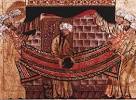
en.wikipedia.org
Kaaba - Wikipedia, the free
626 × 459 - 96k - jpg |
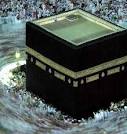
crystalinks.com
Pilgrims touching one of the
546 × 576 - 57k - jpg |

fr.wikipedia.org
Canopus α Carinae
2000 × 1311 - 1223k - jpg |
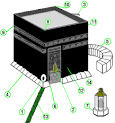
en.wikipedia.org
Kaaba - Wikipedia, the free
356 × 381 - 34k - png |

en.wikipedia.org
with visits to the Kaaba
566 × 396 - 118k - jpg |
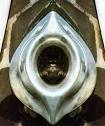
redicecreations.com
The Black Stone of Ka'aba
360 × 432 - 40k - jpg |

philipcoppens.com
The Canopus Revelation
197 × 277 - 24k - jpg |

mysteryoftheiniquity.com
God the Mother, p. 265).
441 × 478 - 50k - jpg |

ayfo.net
"Piedra Negra de la Kaaba"
211 × 239 - 10k - jpeg |

grahamhancock.com
brightest stars.
800 × 412 - 100k - jpg |
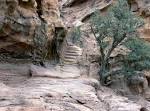
maraustralis.com
orientado hacia Canopus,
1600 × 1179 - 953k - jpg |

bibliotecapleyades.net
the geographical Canopus)
333 × 617 - 24k - jpg |

caravanserai-magazine....
The orientation of the Ka'aba.
436 × 297 - 8k - gif |
|
|
|
|
Réponse |
Message 9 de 10 de ce thème |
|

astrofotoscolombia.blo...
La Nave de Jasón ( Carina,
400 × 268 - 43k - jpg |

lunarplanner.com
Argo Navis, Canopus and Sirius
500 × 400 - 195k - png |

constellationsofwords.com
Canopus
450 × 621 - 81k - jpg |
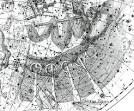
ianridpath.com
Argo.JPG
568 × 472 - 103k - jpg |
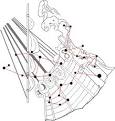
reocities.com
ARGO NAVIS in the sector
339 × 356 - 8k - gif |
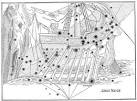
argonauts-book.com
Argo Navis, after Bayer's Star
649 × 479 - 155k - jpg |
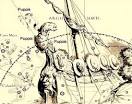
constellationsofwords.com
Argo Navis. Jason's Ship
528 × 417 - 101k - jpg |
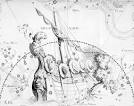
redorbit.com
Topics: Argo Navis
571 × 453 - 127k - jpg |

arsendarnay.blogspot.com
He divided Argo Navis into
1288 × 1600 - 292k - jpg |

astrofotoscolombia.blo...
es Canopus en Carina o la
1600 × 1071 - 249k - jpg |

arsendarnay.blogspot.com
If true, however, Canopus is
399 × 278 - 25k - jpg |

mgrazula.blogspot.com
Argo Navis dominates this
500 × 329 - 191k - jpg |

carlosnieto.com
Argo Navis es una embarcación
564 × 480 - 107k - jpg |

arsendarnay.blogspot.com
Canopus in Argo Navis
480 × 481 - 21k - jpg |
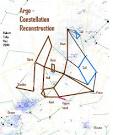
cosmoquest.org
Argo Navis Reconstruction
500 × 599 - 34k - php |

pa.msu.edu
Argo Navis was the ship used
528 × 380 - 52k - jpg |
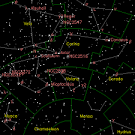
universetoday.com
of Argo Navis.
600 × 600 - 15k - gif |

redorbit.com
Topics: Argo Navis
145 × 88 - 7k - jpg |

constellationsofwords.com
argo. Urania's Mirror 1825
494 × 364 - 88k - jpg |
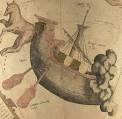
argonauts-book.com
Argo Navis by Mercator,
371 × 362 - 37k - jpg |
|
|
|
|
Réponse |
Message 10 de 10 de ce thème |
|
|
|
 Premier
Premier
 Précédent
2 a 10 de 10
Suivant
Précédent
2 a 10 de 10
Suivant
 Dernier
Dernier

|





 Sirio es la estrella más brillante del Can Mayor y Canopus la más brillante de la constelación de la Popa, que formaba parte de la antigua constelación del Argonavis, la nave mitológica usada por los héroes griegos para buscar el Vellocino de Oro.
Sirio es la estrella más brillante del Can Mayor y Canopus la más brillante de la constelación de la Popa, que formaba parte de la antigua constelación del Argonavis, la nave mitológica usada por los héroes griegos para buscar el Vellocino de Oro. Most ancient civilisations created a centre for each city, but equally had a “national centre”, which acted as a “central centre”. Authors such as Jean Richer have argued that Greek city planning, i.e. the location where certain towns would be built, is partially linked with trying to maintain a “master plan”, incorporating this “central centre” from which other centres radiate. He believes that the Greeks were aware of a meridian, and that this was “centred” on Mount Olympos, the place where the gods were said to reside.
Most ancient civilisations created a centre for each city, but equally had a “national centre”, which acted as a “central centre”. Authors such as Jean Richer have argued that Greek city planning, i.e. the location where certain towns would be built, is partially linked with trying to maintain a “master plan”, incorporating this “central centre” from which other centres radiate. He believes that the Greeks were aware of a meridian, and that this was “centred” on Mount Olympos, the place where the gods were said to reside.  The Nile, identified with the god Hapi, who was a characteristic of Osiris, might also have been interpreted with the Djed pillar and the Cosmic Tree. The Nile was literally the “spine” of Egypt: it was the backbone of communication; if the Nile would no longer be the prime method of communication, Egypt would literally become paralysed.
The Nile, identified with the god Hapi, who was a characteristic of Osiris, might also have been interpreted with the Djed pillar and the Cosmic Tree. The Nile was literally the “spine” of Egypt: it was the backbone of communication; if the Nile would no longer be the prime method of communication, Egypt would literally become paralysed.  Space was divided into two halves to create the meridian, but it seems that most cultures then halved space in the other direction. The end result is two lines intersecting at one point: the sign of the cross. The centre was a crossing, a singularity, where in most cultures we find the primeval hill, or the Mound of Creation. This was itself a point from which the gods were said to ascend, or sit – as in the case of Mount Olympos.
Space was divided into two halves to create the meridian, but it seems that most cultures then halved space in the other direction. The end result is two lines intersecting at one point: the sign of the cross. The centre was a crossing, a singularity, where in most cultures we find the primeval hill, or the Mound of Creation. This was itself a point from which the gods were said to ascend, or sit – as in the case of Mount Olympos.  According to Stecchini, the Gizeh plateau may have been the “prime primeval hill” of Egypt. But that is not all. Stecchini further claimed that a number of locations throughout the ancient world were located in exact geodetic relation to the longitude meridian of the Great Pyramid.
According to Stecchini, the Gizeh plateau may have been the “prime primeval hill” of Egypt. But that is not all. Stecchini further claimed that a number of locations throughout the ancient world were located in exact geodetic relation to the longitude meridian of the Great Pyramid. 